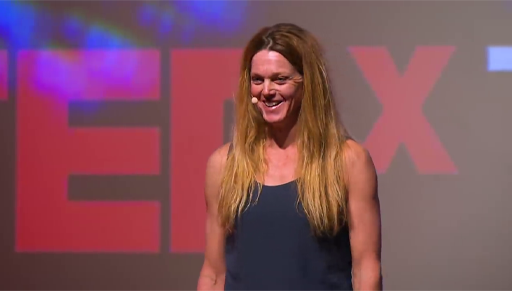5 Why do we need to study women separately?
Research lacking female participants has many implications for female athletes, not least that we may never know if something that is safe for men is also safe for women. Or it may be that some types of training are more beneficial for women than men.
Dr Stacy Sims is an exercise physiologist who used her own experiences of rowing to ask uncomfortable questions about why female performance can vary significantly on different days. In Activity 5 she explains the impact the menstrual cycle can have on the fuel used by females during exercise and other variations that affect female sporting performance.
Activity 5 Are women the anomaly or is it really the men?
Watch the TedTalk below by Dr Stacy Sims as she explains her own experiences of gender differences in performance as an academic and an athlete. Watch from 01:17 (‘I was a cross country runner for most of my life…’) until 06:10 (‘… if we work on skill and development we’ll be fine’). Then answer the following questions:
- What differences does Dr Sims identify between male and female athletes?
- What are the differences between males and females that occur at puberty?

Transcript
[MUSIC PLAYING]
[CLAPPING]
[LAUGHTER AND CLAPPING]
[LAUGHTER]
[LAUGHTER]
[LAUGHTER]
[LAUGHTER]
[LAUGHTER]
[CLAPPING]
[MUSIC PLAYING]
Discussion
- Dr Sims identifies that female athletes use differing amounts of fat and carbohydrates as fuel for exercise dependent on which phase of their cycle they are in. Dr Sims explains how men do not experience this variation to the same extent and they also experience fewer differences in how they tolerate heat from day to day. These hormonal differences experienced by women are often seen as limiting factors to performance, but they also offer opportunities, as you shall see in Session 2.
- At puberty, males become stronger and faster due to the increased presence of testosterone and its impact on their muscular system. Females have a very different experience, as oestrogen causes them to lay down more body fat, their hips widen to facilitate childbearing, and they start getting periods that cause fluctuations in hormones, energy and mood.
Interestingly, Dr Sims makes the point that as there slightly more females than males in the world it must be men who are the anomaly, but females are regarded as such because they are more complicated to conduct research on.
You are now going to look at puberty and ask why it is such an important stage for maintaining female sports participation.
